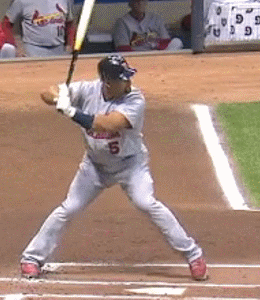Hey Wellphyt,
Still hoping you and/or jbooth will follow up on the questions posed to you here:
http://www.discussfastpitch.com/softball-hitting-technical/12372-rear-leg-14.html#post146500
Cheers,
NoonTime
NoonTime, I'm not purposely trying to ignore you. I just don't think answering your question is relevant to teaching hitting. If you are asking if I've ever experimented with trying to INternally Rotate the femur of my rear leg while in my stance; yes I have. I've experimented with everything you can think of.
It sounds like you are going down the "Battle in the Rear Hip Socket" path. Good luck with that. I don't subscribe to that theory. Jbooth has tried to explain to you over at Baseball-Fever why it's anatomically not possible to have a battle in the rear hip socket, but you and others just blew him off.
The other popular view on the various hitting boards is the idea that the "rear leg turns the still coiled hip forward". It sounds like you along with most others on the various hitting boards have accepted this idea as scientific fact. I don't agree with that idea either, at least as I understand the concept as it's been explained.
As I see it, there are two differing views as to the role of the rear leg. One view says that the rear leg turns the knee down and forward and sucks/drags the rear hip forward. The other says that the rear hip gets in a position on top of the rear leg, drives the rear knee down and forward using the butt muscles, and pulls the rear foot off of the ground.
The first view says that the rear leg and knee folding under the rear hip causes the rear hip to turn forward. The second view says that the rear hip is the driver. I believe that the rear hip uses the rear leg to leverage the ground to weight shift. The role of the rear leg is to remain firm and not leak any pressure. You don' want a rocket launching pad to collapse until after the rocket has started to lift off.
I believe the hips clear in a more anatomically correct way by dual EXternal Rotation. Watch the golf clips and article I posted. Watch Hamilton's, Pujols', Trout's etc back foot. The information is all right there.
Maybe the Utley clip will help when I get into that.....







